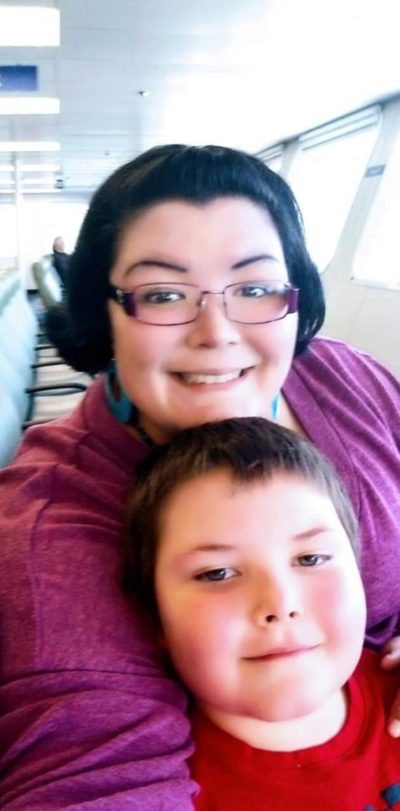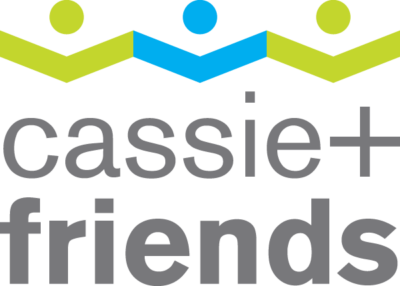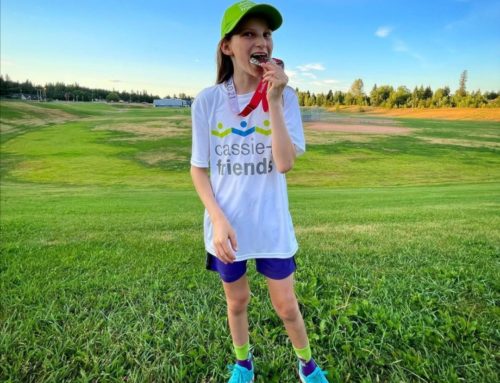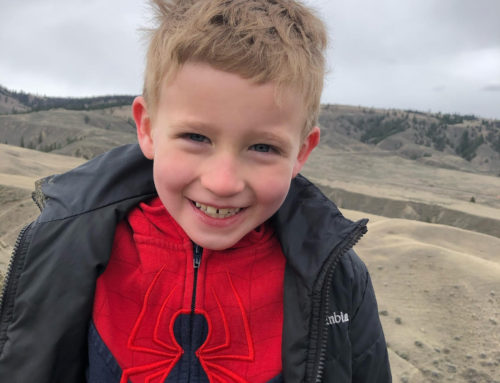The quarterly clinic in Prince George for kids with juvenile arthritis is a saving grace for some families. For others, it’s one of a handful of options for specialized treatment.
With Abraham pregnant and raising her three-month-old daughter with her husband in Burns Lake, B.C., the problem only accelerated.
“His little legs looked like toothpicks on either side of a candy apple,” she said.
She took him to the hospital multiple times, often leaving with just as many questions as she came in with. Abraham soon started receiving visits from family services as the swelling in her son’s knees continued to swell unabated despite numerous visits to the hospital. 
A pediatrician eventually helped her, at which point her son’s knees were “the size of grapefruits.” Within 15 minutes, they completed a blood test and diagnosed him with juvenile idiopathic arthritis. The answer, finally laid at her feet, put an end to a process she, as an Indigenous woman, has no doubt involved racism.
Still, she moved toward getting her son treatment, entering a world she hardly knew existed.
Lori Tucker constantly meets parents whose kids receive a diagnosis for a disease they believed only afflicted adults.
“Every week in the pediatric rheumatology clinic we diagnose kids with juvenile idiopathic arthritis … and parents will say, ‘I had no idea that children could get arthritis,’” said the division head of rheumatology at B.C. Children’s Hospital’s department of pediatrics.
Approximately one in 1,000 children are diagnosed with it — meaning for a school of 1,500 kids, Tucker said, approximately one or two are likely to have juvenile arthritis. Because it has seven subtypes, it presents itself along a spectrum: some will experience swelling, like Abraham’s son, and others can develop joint pain or skin rashes.
Because of its variability and minimal presence in public dialogue despite being relatively common — it’s diagnosed more often than other childhood illnesses, like cancer and cystic fibrosis, and similar to type one diabetes — Tucker said it’s “often overlooked.” She said children frequently come in with signs that it’s been ongoing for over a year.
While its physical presentations sometimes appear obvious, when controlled it’s described by doctors as an invisible disease. Other than taking weekly injections at home to help manage, it more frequently presents itself socially when kids are unable to participate in certain aspects of gym class.
Receiving care in northern B.C. also has associated difficulties due to its distance from the lower mainland. With B.C. Children’s Hospital in Vancouver being the primary hub for pediatric rheumatology in the province, for 25 years the hospital has facilitated a travelling clinic to Prince George that now comes to the city four times a year.
When B.C. Children’s Hospital comes now, they see around 35 to 40 kids over the two-day clinic, Tucker said.
Because many kids don’t require around-the-clock care and the few visits meet their needs, those living in Prince George have the advantage of direct access to a pediatrician with direct knowledge of the issue multiple times a year. Nicole Maria, whose daughter, Scarlett, has juvenile arthritis, said she “can’t imagine not living in Prince George” in order to keep things in check.
But those who live well outside of Prince George like Abraham have to make treacherous trips along highway 16 — sometimes in the winter — to get make those appointments
“It’s just a bit nightmarish all the way around,” Abraham said, recalling horrific drives through snow and fog to get to the city.
In a wide-scale effort to bring families like Maria and Abraham’s together, Cassie and Friends, a charity dedicated specifically toward supporting kids with juvenile arthritis, has for 16 years tried to connect families with similar experiences.
Regardless of its severity, both Abraham and Maria said that as parents, the experience of having a child with juvenile arthritis was isolating due to it being seldom-discussed — one which changed when they found a community of other parents. Pre-pandemic, they’d hold in-person events for parents to attend and meet others.
 “I’m sad they can’t do it right now because it was just nice,” Maria said. “There were so many people there, so I really didn’t feel isolated.”
“I’m sad they can’t do it right now because it was just nice,” Maria said. “There were so many people there, so I really didn’t feel isolated.”
Over time, things have turned around in the north. Jennifer Wilson, executive director at Cassie and Friends, said awareness — both in doctors’ offices and in the general public — have started to improve since the charity started in 2006. Still, numerous signals are continuing to be missed due to a lack of general knowledge.
“There’s lots of families that we spoke with Prince George and the north where their child’s symptoms are either missed misrepresented as growing pains,” Wilson said.
Still, funding for further developing supports doesn’t appear to be on the way, Tucker said, though she’s content with B.C. Children’s Hospital is able to provide it right now.
For her part, Maria is now preparing to transition her daughter to receiving her medication through injections. Maria hasn’t told her about the arthritis yet — it didn’t present itself as severely early on and has had relatively manageable symptoms. For all her early fears about life would be like having a kid with juvenile arthritis, she just wants to bring more awareness.
“It just really helps people not feel so alone, because somebody out there knows what you’re going through.”










Leave A Comment